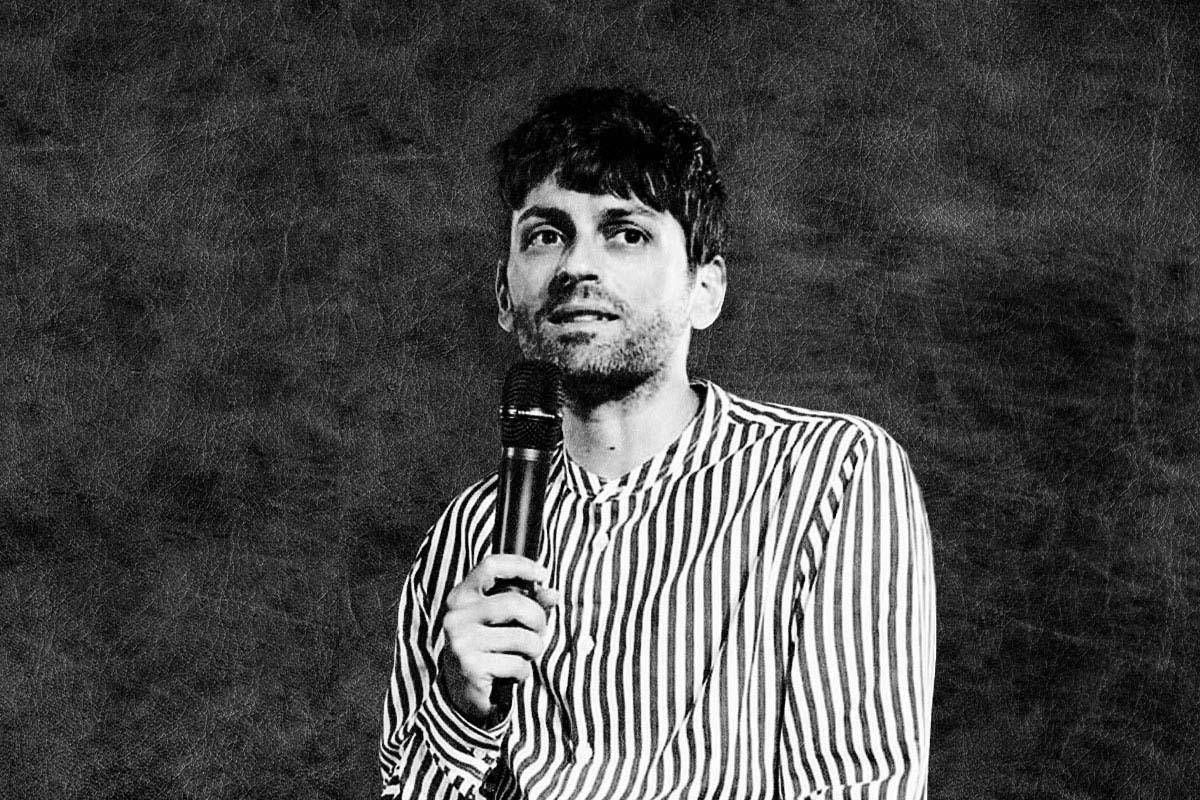Lucca Comics & Games arrives in Milan with “Amano Corpus Animae”, the largest retrospective ever dedicated in the West to Yoshitaka Amano, the visionary Japanese artist who left his mark on the imagination of anime, video games and contemporary art. From 13 November 2024 to 1 March 2025, the Fabbrica del Vapore will host over 100 original works, from Tatsunoko to Final Fantasy, retracing 50 years of the career of this master who was able to masterfully blend traditional art and new media. The exhibition, curated by Fabio Viola for Lucca Comics & Games with the collaboration of POLI.design for the installation, will offer an immersion in Amano’s creative universe, celebrating his global impact on pop culture. Adnkronos Tech&Games met Viola to talk about this important exhibition and the Japanese artist’s impact on pop culture and art.
How did the idea of organizing the “Amano Corpus Animae” exhibition come about and what was your role in curating it?
The idea of ”Amano Corpus Animae” was born from a lucky meeting. In 2022 I had the pleasure of meeting the master Yoshitaka Amano and inviting him to Italy, to the Royal Palace of Venaria Reale, where at the time I was curating the exhibition “PLAY – Videogame, Art and Beyond”. Delving deeper into his human and artistic history, I realized a paradox: one of the greatest living masters, whose works have embellished globally successful books, comics, anime and video games, regularly exhibited in the main museums of the world, was not never been the protagonist of a major European exhibition. Hence the incipit of “Amano Corpus Animae”, the largest retrospective ever held on the 50-year career of the master born in Shizuoka, which will be held from 13 November 2024 to 1 March 2025 at the Fabbrica del Vapore in Milan.
My role as curator was to act as a bridge between the artist and the production, curated by Lucca Crea, the company that organizes Lucca Comics & Games. Over the last three years I have studied Amano’s works in depth, selecting the over 130 tables and dozens of objects exhibited in Milan, designing the experiential itinerary for the visitor, drafting the texts of the catalog and the information systems and collaborating with professionals and companies that made this project possible.
What challenges did you face in curating such a broad retrospective of Yoshitaka Amano’s career, which spans anime, video games, theater and fine art?
Studying Yoshitaka Amano is a complex undertaking. He is an artist who moves fluidly between extremely varied languages, techniques, materials and artistic styles. At just 15 years old he began working as an animator at Tatsunoko Production, quickly becoming responsible for the creation of iconic cartoon characters such as Ape Magà, Pinocchio, Hurricane Polimar, Yattaman and Mago Pancione. From animation he moved to illustration, creating the visual imagery of works such as Vampire Hunter D, The Sandman by Neil Gaiman and many books by Michael Moorcock. In those years he won international awards and started prestigious collaborations, as demonstrated by the covers created for legendary heroes such as Batman, Superman, Elektra & Wolverine and the only non-photographic cover of Vogue, entrusted to him. Video games, such as Final Fantasy, consecrate him as a global icon of the new arts. Yet, despite the recognition and commercial success, Amano has remained an understudied artist from a curatorial point of view. To fill this gap, I often traveled to Tokyo to study and catalog his works, discuss with him and his management, with the aim of setting up an exhibition that would convey his extraordinary ability to create contemporary mythologies.
The Kickstarter campaign for the exhibition reached its goal in less than three hours. How do you interpret this enthusiastic response from the community?
This extraordinary result is the result of excellent teamwork coordinated by Emanuele Vietina, director of Lucca Crea. Such an experimental project required strong involvement of the community of enthusiasts, and this pushed us to take an atypical path for an art exhibition art. Thus, last summer, the idea of a campaign on the Kickstarter crowdfunding platform was born, which in just a few hours reached its primary objective, raising 180,000 euros from financiers all over the world in about a month. In exchange for their contribution, enthusiasts obtained exclusive experiences, such as the possibility of seeing their name on the initial wall of the exhibition, meeting Amano for an aperitif, or accessing limited and autographed versions of the catalog and some drawings.
Can you tell us about the importance of exhibiting Final Fantasy art in Europe for the first time and what impact do you think it will have on Western audiences?
With over 16 official chapters, animated films and merchandise, the Final Fantasy saga is a global phenomenon. Almost two hundred million people around the world have purchased this role-playing game produced by Square Enix, of which Yoshitaka Amano is the artistic “father”. In Milan, for the first time, it will be possible to admire almost fifty tables that retrace the history of this franchise from the first chapter of 1987 to today, including the logos created by the master, the drawings of characters such as Sephiroth, Cloud and Terra Branford, and dedicated to game settings and maps. The exhibition itinerary will compare Amano’s original drawings with the game packaging, creating an interesting parallel between the initial idea and its commercial realization. Those drawings, which have inspired thousands of young people to pursue careers as illustrators, represent the roots of art in video games.
How do you see the evolution of the relationship between traditional art and new media, such as video games and comics, in contemporary culture?
If comics are now considered the ninth art, video games embody the tenth. On a digital canvas, new artistic and creative figures give shape to visions and ideas in a language that we could define as “interactive image”, which differs from traditional forms due to the possibility offered to the public to act and interact within the work. Observing the videogame medium, we realize that it is a summation of previous arts: in works like The Last of Us or Final Fantasy, literature, architecture, sculpture, painting, music and cinema coexist, making the videogame a sort of meta-art. The points of contact with the great masters of the past are numerous: ICO refers to De Chirico, Rez recalls Kandinsky’s compositions. For over a decade, large international art museums such as the MoMA in New York have included some video games in their permanent collections, institutionalizing this form of expression that was only commercially born in 1972.
As curator of the new permanent Video Game Zone area at the National Cinema Museum in Turin, what objectives have you set yourself to integrate the world of video games into a cinematographic context?
The opening of a permanent collection of video games in a major Italian museum is a historic moment. Thanks to the foresight of the then director Domenico De Gaetano, last July the Video Game Zone opened its doors, a permanent space at the National Cinema Museum in Turin where it is possible to admire unpublished materials linked to the creative and production cycle of video games that have made the history of this medium. Through direct dialogue with producers and developers, the museum has acquired the original scripts of games such as Heavy Rain and Detroit Become Human, correspondence and scripts of Broken Sword and Final Fantasy, the initial drawings of Prince of Persia and even a blackboard with posts Level design -its handwritten by Christian Cantamessa for Red Dead Redemption. This material is not only exhibited, but also studied and catalogued, with the aim of preserving the enormous artistic heritage underlying video games, which often risks being lost. In the future, all this research will flow into the first major exhibition dedicated to the relationship between cinema and video games.

You inaugurated the Video Game Zone with a Masterclass conducted by David Cage, founder of Quantic Dream and a leading figure in the international gaming scene, in which the convergences between cinema and video games were explored. What, in your opinion, are the main synergies between these two art forms and how can they influence each other?
David Cage’s latest production with Quantic Dream perfectly embodies the cinematic game genre. Detroit Become Human is an interactive experience based on a script of over 2000 pages, with 250 real actors, 35000 cinematic shots, 74000 animations and over 5 million lines of code. These numbers demonstrate the broad convergences between cinematographic and videogame language, whose story of love and hate begins in the 70s with Hollywood licenses transformed into video games and the acquisition of companies like Atari by giants like Warner Bros. Over the years Over the years, more and more game designers have drawn on cinematic language to give narrative and visual depth to their productions, as demonstrated by games like Dragon’s Lair, which follows the world of Disney animation, and LucasArts productions. As the popularity of video games has advanced, the trend has reversed: today there are numerous successful TV series based on video games, such as Arcane, Fallout and The Last of Us. In the future, we will probably witness a sublimation of the two languages with increasingly interactive stories.
As an expert in gamification, how do you think the principles of gaming can be applied to museums to make the visitor experience more engaging?
Video games are now an art form in all respects, but for years they have also established themselves as tools for reaching and involving new cultural audiences. In 2018 I founded TuoMuseo.it to help museums, libraries, theaters and tourist destinations integrate gaming into their strategies. I have been fortunate to work on innovative projects such as Father and Son, a video game produced by the National Archaeological Museum of Naples which has exceeded 5 million downloads and encouraged almost 100,000 people to visit the museum. Today the cultural visitor seeks protagonism, involvement and interactive and personalized experiences. He wants to be a spectator, a participant and no longer passive. I think of projects like PlayAlghero, which has transformed the Sardinian city into a “playground” with over 10 recreational experiences that guide citizens and tourists to discover cultural sites. My next challenge will be in Dossena, in the province of Bergamo, where a mix of recreational, technological and infrastructural innovation aims to revitalize a village at risk of depopulation, transforming it into a creative and new social hub.








